Local Habitat Restoration Projects
Besides the restoration projects supported by our chapter, there are many other projects that are run by other organizations in our chapter area in need of help. Join volunteers at your favorite parks and preserves to help restore habitat for native flora and fauna. Projects include planting California natives, trail maintenance and of course, plenty of weed pulling! Contact the listed organizations for details. If you have a project that you would like us to include on this page, please send the information to This email address is being protected from spambots. You need JavaScript enabled to view it..
Friends of Foothills Preserve
Friends of Foothills Preserve focuses on enhancing wildlife habitat along the four miles of Buckeye and Los Trancos Creeks that flow through the preserve, as well as targeting stands of invasive plants scattered throughout this 400-acre preserve. In summer they work to eradicate yellow star thistle. They meet on Saturdays and/or Sundays, as well as various times midweek, usually starting at 9:00 AM. Sign up to volunteer at https://fofweb.org/volunteering/. Location: Foothills Nature Preserve, 3300 Page Mill Road, Los Altos Hills
Grassroots Ecology
Volunteer with us to improve local ecosystems at our habitat restoration projects in San Mateo and Santa Clara Counties. Visit www.grassrootsecology.org/volunteer to choose an event from the calendar then register to volunteer. This email address is being protected from spambots. You need JavaScript enabled to view it. or (650) 419-9880.
Keep Coyote Creek Beautiful – San Jose
Help restore Coyote Creek by joining us to remove trash and non-native plants, plant native plants and advocate for a healthy Coyote Creek. Choose an event from www.KeepCoyoteCreekBeautiful.org/events1. Deb Kramer, This email address is being protected from spambots. You need JavaScript enabled to view it. or (408) 372-7053
 Magic – Planting for the Second Hundred Years
Magic – Planting for the Second Hundred Years
Plant and care for oaks and other California natives in local open space and at Magic’s Palo Alto facility. Saturday mornings. For details and to sign up, contact This email address is being protected from spambots. You need JavaScript enabled to view it.. www.ecomagic.org/projects
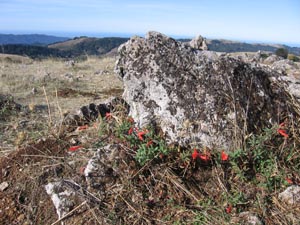
Midpeninsula Regional Open Space District
Activities include invasive plant removal, planting native vegetation, trail maintenance and fence repairs. Visit Midpen’s Land Steward page at volunteer.openspace.org/agency/detail/?agency_id=121115 to learn more, choose an event and register for it. Ellen Gartside at This email address is being protected from spambots. You need JavaScript enabled to view it. or (650) 772-3724.
Pearson-Arastradero Preserve in Palo Alto
The Pearson-Arastradero Preserve is a 622-acre open space preserve in the Palo Alto foothills. Grassroots Ecology, a local environmental nonprofit collaborates with the City of Palo Alto to act as stewards of the preserve. Volunteers together with Grassroots Ecology staff restore habitat, install native plants, remove invasive species, and otherwise work together to increase biodiversity on the Preserve.
More Information
San Bruno Mountain Watch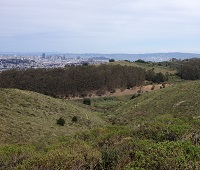
Restore remarkable ecosystems on San Bruno Mountain and nearby. Weeding, planting, nursery workdays: Check volunteer events web page for workday details and to sign up: www.mountainwatch.org/upcomingevents, This email address is being protected from spambots. You need JavaScript enabled to view it. (415) 467-6631
Santa Clara Valley Open Space Authority
Land Steward volunteers assist Authority staff with trail maintenance, habitat restoration, fencing and cleanup projects. Learn more at openspaceauthority.galaxydigital.com/agency/detail/?agency_id=149856 or contact Kat Hill at This email address is being protected from spambots. You need JavaScript enabled to view it. or (408) 754-4518.
Ulistac Natural Area – Santa Clara
Workdays are on pause. Organizers wanted. For updates see www.ulistac.org or Facebook Ulistac Natural Area. This email address is being protected from spambots. You need JavaScript enabled to view it.
Cataldi Park Native Garden
 The Cataldi Park Native Garden Project is working to create a habitat for native plants and pollinators including monarch butterflies, and to spread awareness about native plant habitats and pollinators among volunteers and visitors at Cataldi Park, a 39-acre park in the Berryessa area of San Jose. We have regular Saturday morning work sessions at the park. Current activities include mulching the remaining area, weeding and setting up irrigation. If you are interested in volunteering, please sign up on our chapter's meetup group.
The Cataldi Park Native Garden Project is working to create a habitat for native plants and pollinators including monarch butterflies, and to spread awareness about native plant habitats and pollinators among volunteers and visitors at Cataldi Park, a 39-acre park in the Berryessa area of San Jose. We have regular Saturday morning work sessions at the park. Current activities include mulching the remaining area, weeding and setting up irrigation. If you are interested in volunteering, please sign up on our chapter's meetup group.
History
A large portion on the western end of the park is barren and not maintained by the park staff. Starting in 2023, this volunteer-lead project sponsored by our chapter and supported by the City of San Jose’s Parks, Recreation and Neighborhood Services Department is converting a part of this barren area into a native garden. The Adopt-a-Park program of the Department organized a volunteer event in March, 2023 to kick off the project. 25 volunteers prepared around 1,500 square feet of the site for fall planting. During the event, volunteers laid down cardboard for sheet mulching, wheelbarrowed wood chips from existing piles in the park and spread the mulch on the cardboard. 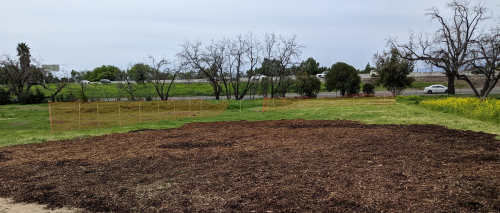
The project obtained a Wildflower Grassland Kit from the Xerces Society. The kit contains 600 small herbaceous transplants (mostly ‘plugs’) including milkweed, flowering forbs, and some grasses. In the first phase of the project, we will plant these plugs between early November – December 2023. The project is also a recipient of a BeautifySJ award from the City of San Jose which will fund other supplies for Phase One of this project.
Kirk Park Native Plant Pollinator Garden
 With its expanding corridor of biodiversity, San Jose’s Kirk Park has become a local destination for viewing beautiful native plants, birds, lizards, bees, and butterflies, including the struggling monarch butterfly.
With its expanding corridor of biodiversity, San Jose’s Kirk Park has become a local destination for viewing beautiful native plants, birds, lizards, bees, and butterflies, including the struggling monarch butterfly.
Kirk Park is a small neighborhood park on the grounds of a former elementary school. The bulk of the park is comprised of turf grass areas used for recreational activities. Inspired by Douglas Tallamy’s book Nature’s Best Hope, a group of community volunteers set out to convert the park’s weedy perimeter into an oasis of biodiversity.
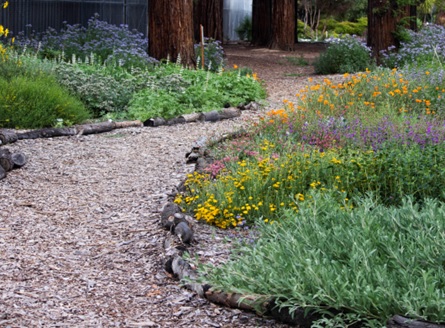 The garden began in 2022 in a sunny area along the well-used perimeter walkway at the northern edge of the park. Community volunteers removed weeds in the summer, then planted native pollinator plants in the fall. By spring, blooms appeared, attracting numerous pollinators and park visitors to the garden. Buoyed by this initial success, the volunteers expanded the garden in 2023. Now, native pollinator plants occupy most of the northern and some of the western edge of the park.
The garden began in 2022 in a sunny area along the well-used perimeter walkway at the northern edge of the park. Community volunteers removed weeds in the summer, then planted native pollinator plants in the fall. By spring, blooms appeared, attracting numerous pollinators and park visitors to the garden. Buoyed by this initial success, the volunteers expanded the garden in 2023. Now, native pollinator plants occupy most of the northern and some of the western edge of the park.
The garden is designed, planted and maintained by community volunteers under the auspices of San Jose’s Adopt-A-Park program and with generous support from CNPS-SCV, Happy Hollow Foundation, the Xerces Society, BeautifySJ and community donations.
The plants in the garden were chosen to provide a continuous source of nectar for the native pollinators, so there is nearly always something blooming. With over 120 species of native plants, all labeled, the garden is a great place to experience the beauty and diversity of California’s native plants. Please visit often and see what’s in bloom!
 Community Work Days at the Garden
Community Work Days at the Garden
Volunteers meet at the garden on Saturdays from 9 AM to 11 AM, weather permitting, for weeding, watering and other maintenance activities. Occasionally there will be other tasks such as mulching and planting. Community volunteers, including families with children over 6, are always welcome! First-time volunteers will need to fill out a form from the City of San Jose. If you would like to become a part of the Kirk Park Native Plant Pollinator Garden’s community of volunteers, please sign up on our Meetup page.
Chapter Projects
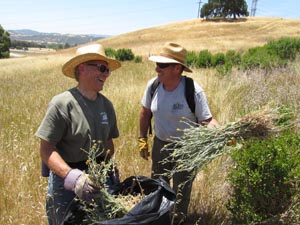 The Santa Clara Valley Chapter of CNPS supports several habitat restoration and native garden projects in Santa Clara County and San Mateo County. We encourage members and supporters to get involved with a project near you, whether at a park or creek or natural area. Restoration projects are a great way to learn about native plants and their role in the ecology and see firsthand the damage caused by invasive plants, and native plant gardens provide an excellent way to learn more about growing native plants. Both restoration and native garden projects provide an opportunity to make a difference and help the environment.
The Santa Clara Valley Chapter of CNPS supports several habitat restoration and native garden projects in Santa Clara County and San Mateo County. We encourage members and supporters to get involved with a project near you, whether at a park or creek or natural area. Restoration projects are a great way to learn about native plants and their role in the ecology and see firsthand the damage caused by invasive plants, and native plant gardens provide an excellent way to learn more about growing native plants. Both restoration and native garden projects provide an opportunity to make a difference and help the environment.
Our Chapter supports these projects:
Here are some more ongoing restoration projects with other local organizations if you're not able to join one of our chapter projects.
Fountain Thistle Restoration - October 2015 Workday Report
Sacrifice some native plants in order to save the fountain thistle?
By Carol Mattsson, Blazing Star Newsletter Editor
 After several years of corresponding with Jake Sigg by email to publish announcements of fountain thistle work parties in the Blazing Star newsletter, I decided to attend one such workday so I could finally meet him in person.
After several years of corresponding with Jake Sigg by email to publish announcements of fountain thistle work parties in the Blazing Star newsletter, I decided to attend one such workday so I could finally meet him in person.
On a sunny clear October day I drove my car to the "end of Lessingia Court" in San Mateo and as promised by the September-October 2015 Blazing Star announcement, I found a CNPS work crew gathering.
Soon after I finished tying my boot laces, Ken Himes called out to me in greeting. It was good to see a familiar face, since it was my first time joining in on the fountain thistle restoration project. Ken had laid out tools and gloves in the back of his car for the volunteers.
Several early arriving volunteers gathered around as Ken explained the three kinds of fountain thistle in our area: Cirsium fontinale var. campylon, the Mount Hamilton fountain thistle, on Endangered Plants list 1B.2, that we can see at Coyote Ridge; Cirsium fontinale var. obispoense that grows in San Luis Obispo County and finally Cirsium fontinale var. fontinale that grows only in San Mateo County. The latter two are Federally and State of California listed as Endangered species. All three varieties are found only on serpentine steeps and streams.
The "fountain" in the common name comes from the thistle's flower stems flowing downward growth habit, compared to the usual thistle's flower heads being held erect.
Jake explained that the project started when the entire hillside above the highway was thickly covered with pampas grass. Caltrans said they'd give the pampas grass three separate sprayings to kill it, as long as CNPS would follow up with on site visits to pull the pampas grass resprouts. The pampas grass seeds only live for about four months, so after a year only new seedlings from outside seeds would remain. Now after twenty years, the project has workdays only twice a year, in spring and in fall, which are successful in keeping the pampas grass nearly non-existent and the fountain thistle returning.
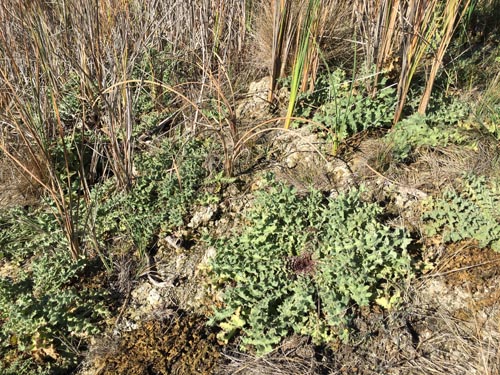 From the gathering place we walked single file out to the work site, along a thin trail past teasel and other weeds that soon gave way to mostly bunch grass dotted with coyote brush on a moderately steep slope above Interstate 280.
From the gathering place we walked single file out to the work site, along a thin trail past teasel and other weeds that soon gave way to mostly bunch grass dotted with coyote brush on a moderately steep slope above Interstate 280.
Soon we came upon our first seep, a serpentine slope with a little water seeping down here and there, with many rosettes of young fountain thistles tucked among other sedges (rushes) and other low vegetation and dead pampas grass bases. Ken explained that the fountain thistle needs a "high water table" but pampas grass and even some native shrubs with their deep roots will lower the water table, making it difficult for the fountain grass to find the necessary water to grow.
The project has indeed been a success: the most recent fountain thistle count was done by Crystal Niederer of the Edgewood Restoration Project. She gave up counting after finding 6,000 individual plants.
See the photo below of Ken and Jake on either side of the rushes to measure for the extent of the fountain thistle growth.
 As in any habitat restoration project, volunteers need to learn the difference between plants to be saved and plants to be pulled out. Jake showed us the difference between pampas grass seedlings and young rushes. The pampas grass has a definite keel along each blade and the grass edges are sharp, especially if you try to run your finger down the edge to the base. The rushes have a less distinctive keel and the grass edges are smooth - you can run your fingers up and down the edges. Jake said we only needed to get a few inches of the pampas grass roots in order to kill the plant.
As in any habitat restoration project, volunteers need to learn the difference between plants to be saved and plants to be pulled out. Jake showed us the difference between pampas grass seedlings and young rushes. The pampas grass has a definite keel along each blade and the grass edges are sharp, especially if you try to run your finger down the edge to the base. The rushes have a less distinctive keel and the grass edges are smooth - you can run your fingers up and down the edges. Jake said we only needed to get a few inches of the pampas grass roots in order to kill the plant.
In spite of the overall project success, there are plenty of weeds remaining to pull, including blackberry, yellow star-thistle and the occasional pampas grass seedling. We had a large enough crew to split into two, so I joined the group heading to the "far west," an area that sometimes gets neglected when the workday crew is smaller.
There, we concentrated pulling weeds from within a large area of rushes just above the highway's break-down lane. To pull blackberry, Jake showed me how to hold the seedling a foot above the ground with one hand, near the ground with the other, and slowly pull to get a goodly portion of root along with the stem. We pulled a couple of pampas grass seedlings from the rushes, and a few other weeds, then considered the coyote brush.
The controversy here is was it necessary to pull native shrubs and trees to save the fountain thistle? Did we want to restore the hillside to pure bunch grass and other small native plants? There were several coyote brush shrubs mixed in with the sedges, and the hillside held the occasional small oak tree and toyon bush. The coyote brush was definitely encroaching, as there were plants of all sizes and we observed far-away hillsides that were mostly covered with coyote brush. The restoration area is on a 30-year old roadcut, so the vegetation has filled in starting from bare soil that long.
Ken and Jake had differing opinions on what to do. In the end Jake said another volunteer, Dave, and I could take out coyote brush if we wanted to. I worked with Dave to dig out several small coyote brush including several inches of root, with a mattock. Then, emboldened by our success and the loppers and pruning saws at hand, we took on some of the larger shrubs.
What to do with the dismembered coyote brush branches? A deep pile of brush would kill the grass underneath. Instead we laid out the brush in a single layer at the edge of the sedges, so enough sunlight could get through for the sedges to spread and grow up within the dead branches.
At about the time I was starting to feel tired, I saw that noon had arrived and the crew gathered their tools and started heading back to the gathering point. The hillside sure was pretty on the clear, sunny day. If not for the constant background roar of the passing cars, we could have been on any wild, grassy open space. Once we returned to our parking spot, we returned the tools and gloves to their owners and I thanked the leaders for a pleasant outdoor experience with like-minded volunteers.
The project welcomes new volunteers. Check a Blazing Star newsletter early next spring to learn of the next fountain thistle restoration workday.
All photos by Dee Wong
 Magic – Planting for the Second Hundred Years
Magic – Planting for the Second Hundred Years


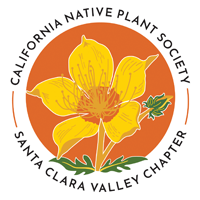

 The Cataldi Park Native Garden Project is working to create a habitat for native plants and pollinators including monarch butterflies, and to spread awareness about native plant habitats and pollinators among volunteers and visitors at
The Cataldi Park Native Garden Project is working to create a habitat for native plants and pollinators including monarch butterflies, and to spread awareness about native plant habitats and pollinators among volunteers and visitors at 
 With its expanding corridor of biodiversity, San Jose’s
With its expanding corridor of biodiversity, San Jose’s  The garden began in 2022 in a sunny area along the well-used perimeter walkway at the northern edge of the park. Community volunteers removed weeds in the summer, then planted native pollinator plants in the fall. By spring, blooms appeared, attracting numerous pollinators and park visitors to the garden. Buoyed by this initial success, the volunteers expanded the garden in 2023. Now, native pollinator plants occupy most of the northern and some of the western edge of the park.
The garden began in 2022 in a sunny area along the well-used perimeter walkway at the northern edge of the park. Community volunteers removed weeds in the summer, then planted native pollinator plants in the fall. By spring, blooms appeared, attracting numerous pollinators and park visitors to the garden. Buoyed by this initial success, the volunteers expanded the garden in 2023. Now, native pollinator plants occupy most of the northern and some of the western edge of the park. Community Work Days at the Garden
Community Work Days at the Garden The Santa Clara Valley Chapter of CNPS supports several habitat restoration and native garden projects in Santa Clara County and San Mateo County. We encourage members and supporters to get involved with a project near you, whether at a park or creek or natural area. Restoration projects are a great way to learn about native plants and their role in the ecology and see firsthand the damage caused by invasive plants, and native plant gardens provide an excellent way to learn more about growing native plants. Both restoration and native garden projects provide an opportunity to make a difference and help the environment.
The Santa Clara Valley Chapter of CNPS supports several habitat restoration and native garden projects in Santa Clara County and San Mateo County. We encourage members and supporters to get involved with a project near you, whether at a park or creek or natural area. Restoration projects are a great way to learn about native plants and their role in the ecology and see firsthand the damage caused by invasive plants, and native plant gardens provide an excellent way to learn more about growing native plants. Both restoration and native garden projects provide an opportunity to make a difference and help the environment. After several years of corresponding with Jake Sigg by email to publish announcements of fountain thistle work parties in the Blazing Star newsletter, I decided to attend one such workday so I could finally meet him in person.
After several years of corresponding with Jake Sigg by email to publish announcements of fountain thistle work parties in the Blazing Star newsletter, I decided to attend one such workday so I could finally meet him in person. From the gathering place we walked single file out to the work site, along a thin trail past teasel and other weeds that soon gave way to mostly bunch grass dotted with coyote brush on a moderately steep slope above Interstate 280.
From the gathering place we walked single file out to the work site, along a thin trail past teasel and other weeds that soon gave way to mostly bunch grass dotted with coyote brush on a moderately steep slope above Interstate 280. As in any habitat restoration project, volunteers need to learn the difference between plants to be saved and plants to be pulled out. Jake showed us the difference between pampas grass seedlings and young rushes. The pampas grass has a definite keel along each blade and the grass edges are sharp, especially if you try to run your finger down the edge to the base. The rushes have a less distinctive keel and the grass edges are smooth - you can run your fingers up and down the edges. Jake said we only needed to get a few inches of the pampas grass roots in order to kill the plant.
As in any habitat restoration project, volunteers need to learn the difference between plants to be saved and plants to be pulled out. Jake showed us the difference between pampas grass seedlings and young rushes. The pampas grass has a definite keel along each blade and the grass edges are sharp, especially if you try to run your finger down the edge to the base. The rushes have a less distinctive keel and the grass edges are smooth - you can run your fingers up and down the edges. Jake said we only needed to get a few inches of the pampas grass roots in order to kill the plant.